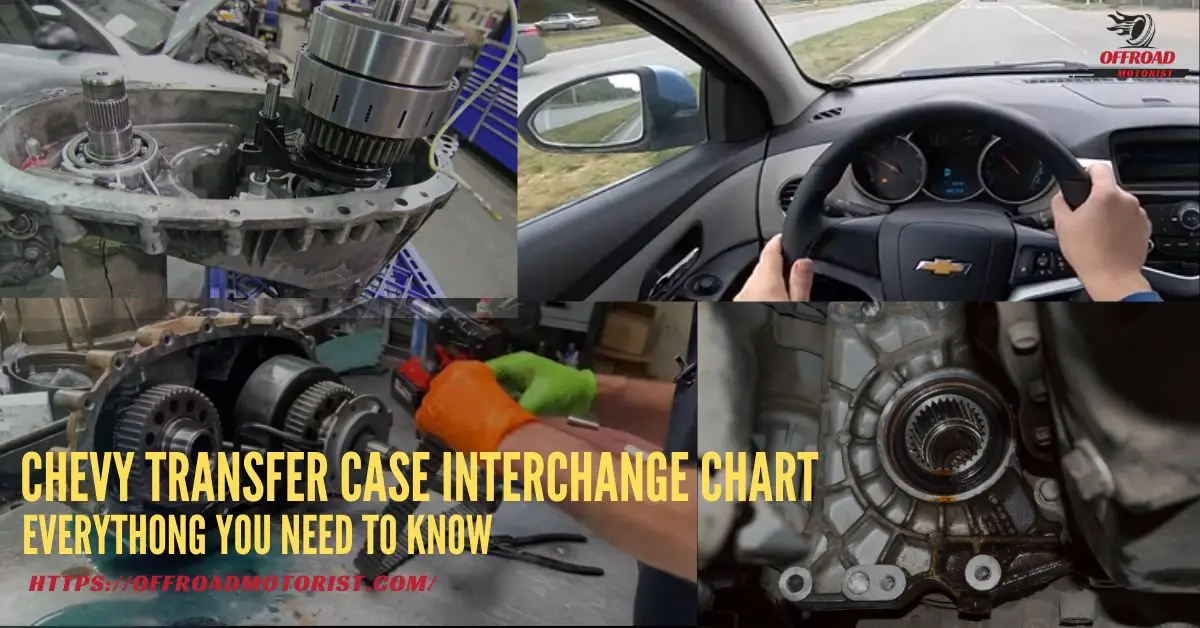TPMS Troubleshooting Easy Methods: How To Reset TPMS Without Key Fob in your car
How to Reset TPMS Without Key Fob in your Car? TPMS troubleshooting can be a headache, especially when resetting the system without a key fob. But don’t worry! Using the right steps and knowledge, resetting TPMS in your car can be easy.
TPMS is especially critical for cars, as it ensures the car’s optimal performance and the safety of the passengers. This blog post will discuss TPMS troubleshooting made easy and how to reset tire pressure sensors without the key fob in a car.
We’ll go over the steps involved, the common problems, and when it’s best to seek professional help. With the information presented here, you’ll be able to troubleshoot TPMS issues quickly and efficiently.
Understanding the TPMS in Cars
The Tire Pressure Monitoring System (TPMS) is an important safety feature in modern cars. It helps monitor the tire pressure and alerts the driver if a significant pressure drop could lead to a blowout or other dangerous driving conditions.
Understanding the TPMS in Cars is a critical aspect of TPMS troubleshooting. There are two types of TPMS in cars – Direct TPMS and Indirect TPMS.
Direct TPMS:
Direct TPMS uses individual sensors mounted in each tire to measure tire pressure. The sensors communicate directly with the car’s computer, and the TPMS warning light will come on if the pressure is too low.
Indirect TPMS:
Indirect TPMS uses the ABS (Anti-lock Brake System) wheel speed sensors to monitor tire pressure. If the ABS wheel speed sensors detect a difference in the rotational speed of one tire compared to the others, it could indicate low tire pressure.
How the TPMS system works
Regardless of the type of TPMS in your car, the system works by monitoring the air pressure in the tires.
If the pressure drops below the recommended level, the TPMS will send a warning signal to the car’s computer, and the driver will see the TPMS warning light on the dashboard.
Common TPMS problems
Common TPMS problems in cars include the TPMS warning light coming on, incorrect tire pressure readings, or sensors that have gone bad. In these cases, the TPMS may need to be reset, or the sensors may need to be replaced.
It is important to keep an eye on the TPMS warning light and take appropriate action if the system is not functioning correctly.
How to Reset TPMS without Key Fob in a Car
Resetting TPMS without the key fob in a car can be done by following these steps:
- Ensure the tire pressure is at the recommended level.
- Locate the TPMS reset button, usually under the steering wheel or near the gas pedal.
- Turn the ignition key to the “ON” position, but do not start the engine
- Press and hold the TPMS reset button until the TPMS warning light starts flashing.
- Release the button when the TPMS warning light stops flashing and remains lit.
- Turn the ignition key to the “OFF” position and start the engine.
- The TPMS warning light should turn off once the system has recognized the new tire pressure readings.
When resetting TPMS, it’s important to keep in mind the following precautions:
- Make sure the tire pressure is at the recommended level before resetting the system
- Follow the steps carefully, and do not press the reset button too long or too frequently
- If the TPMS warning light stays on even after resetting, take your car to a professional mechanic for further troubleshooting.
Note: The exact location and method of resetting TPMS may vary depending on the model and year of your Car. Therefore, it’s recommended to consult the owner’s manual for specific instructions.
Common TPMS Problems and Their Solutions in Modern Cars
The TPMS (Tire Pressure Monitoring System) in cars is designed to monitor tire pressure and provide a warning if it falls below the recommended level.
However, TPMS systems are not immune to problems, and common issues can occur. Below are some of the most common TPMS problems and their solutions:
Common tools required for TPMS reset include a tire pressure gauge and a manual or digital reset tool, depending on the type of TPMS in your Car.
How to Fix the TPMS warning light coming on
The TPMS warning light indicates that the tire pressure has fallen below the recommended level. If the TPMS warning light comes on, it’s important to check the tire pressure immediately and ensure it’s at the recommended level.
Solution:
- Check tire pressure using a gauge and ensure it’s at the recommended level.
- If the tire pressure is correct, reset the TPMS system (refer to the section on “How to Reset TPMS without Key Fob in a Car”)
- If the TPMS warning light remains on even after resetting, replace a faulty sensor.
How to Fix Incorrect tire pressure readings
If the TPMS system provides incorrect tire pressure readings, it could result in under-inflated or over-inflated tires, leading to reduced fuel efficiency and increased risk of tire damage.
Solution:
Calibrate the TPMS sensors or reset the system. To calibrate the TPMS (Tire Pressure Monitoring System) sensors in a car, follow these steps:
- Ensure the tires are inflated to their proper pressure.
- Start the engine and let it run for a few minutes.
- Place the car in “learn mode” by pressing and holding the TPMS button (usually located on the driver’s side door panel) until the tire pressure light starts flashing.
- Drive the car at a speed of over 25 mph for a few minutes to activate the TPMS sensors.
- The tire pressure light should stop flashing and stay illuminated, indicating that the sensors have been calibrated and are working properly.
Note: The process of calibrating TPMS sensors may vary slightly between car models, so it’s best to consult the owner’s manual for specific instructions for your car.
How to Fix Dead TPMS sensors
If one or more TPMS sensors have gone bad, the TPMS system may not be able to monitor tire pressure accurately.
Solution:
Replace the dead TPMS sensors. To replace a dead Tire Pressure Monitoring System sensor in a car, follow these steps:
- Locate the dead sensor: You can use a TPMS tool or your car’s onboard computer to determine which tire’s sensor is not working.
- Remove the tire: Use a lug wrench to loosen the nuts, and then use a jack to lift the car and remove the tire.
- Remove the old sensor: Locate the sensor, which is usually located in the tire’s valve stem. Use a socket wrench to unscrew the sensor from the valve stem.
- Install the new sensor: Take the new TPMS sensor and screw it onto the tire’s valve stem. Make sure it’s tightened securely.
- Reinstall the tire: Lower the car and tighten the lug nuts with the lug wrench.
- Calibrate the new sensor: Refer to the steps for calibrating the TPMS sensors mentioned in my previous answer.
Note: It is best to consult the owner’s manual for specific instructions for your car. If a single sensor has gone bad, it’s recommended to replace all four sensors to ensure the TPMS system functions correctly
How to Fix TPMS warning light flashing
The TPMS warning light flashing could indicate a problem with the system, such as a low battery in the sensor, communication failure, or a malfunctioning TPMS module.
Solution:
To fix the TPMS warning light flashing in a car, follow these steps:
- Check tire pressure: Ensure all tires are inflated to the correct pressure. If any tire is low, inflate it to the recommended pressure.
- Drive the car: Drive the car for a few minutes at a speed of over 25 mph to activate the TPMS sensors.
- Check the sensors: If the warning light remains on, use a TPMS tool or your car’s onboard computer to check the status of the sensors.
- Replace the dead sensor: If a sensor is found dead, replace it as per the steps mentioned in the Dead TPMS Sensor Solution above.
- Re-calibrate the sensors: If the warning light remains on, calibrate the TPMS sensors as per the steps mentioned in my previous answer.
Note: If the warning light continues to flash even after these steps, it may indicate a malfunction in the TPMS system or an issue with the car’s electrical system.
How to Fix TPMS warning light stays on
If the TPMS warning light stays on even after resetting or checking and correcting tire pressure, it could indicate a problem with the system.
Solution:
- Check tire pressure and make sure it’s at the recommended level.
- If the tire pressure is correct, reset the TPMS or replace a faulty sensor.
- If the TPMS warning light remains on even after resetting or replacing a sensor, take your car to a professional mechanic for further troubleshooting.
Note: It’s important to address TPMS problems promptly to ensure the car’s and its occupants’ safety.
When to Seek Professional Help for TPMS Troubleshooting
Suppose you’re experiencing problems with your car’s TPMS (Tire Pressure Monitoring System). In that case, it’s important to seek professional help promptly to ensure the car’s and its occupants’ safety.
Here are some key scenarios when you should consider seeking professional help for TPMS troubleshooting:
The TPMS warning light stays on
If the TPMS warning light stays on even after resetting the system or checking and correcting tire pressure, it could indicate a problem with the sensors, the system, or the car itself.
In this case, it’s recommended to seek professional help to diagnose the issue and provide an effective solution.
The TPMS warning light is flashing
If the TPMS warning light is flashing, it could indicate a problem with the sensors, the system, or the car’s communication system. In this case, seeking professional help is crucial to diagnose and resolve the problem.
Incorrect tire pressure readings
If the TPMS system provides incorrect tire pressure readings that cannot be resolved through resetting or calibrating the system, it’s recommended to seek professional help.
Dead TPMS sensors
If one or more TPMS sensors have gone bad, it’s recommended to replace them as soon as possible. Replacing TPMS sensors can be a complicated task, and it’s recommended to seek professional help to ensure it’s done correctly.
Unresolved TPMS problems
If you’re unsure about how to troubleshoot TPMS problems, it’s recommended to seek professional help. Professional mechanics have the tools and expertise to diagnose TPMS problems and provide effective solutions.
They can also replace faulty TPMS sensors, calibrate the system, and ensure it’s functioning correctly. Seeking professional help for TPMS troubleshooting is important to ensure the safety and reliability of the car.
If you’re experiencing problems with the TPMS system, don’t hesitate to seek professional help to ensure the problem is resolved quickly and effectively.
FAQs on TPMS

Modern cars are equipped with TPMS to enhance the safety and fuel efficiency of the car. In this session, we’ll provide some common FAQs related to TPMS in cars:
What are the benefits of TPMS in Cars?
The benefits of TPMS in cars include improved safety, better fuel efficiency, and longer tire life.
TPMS helps prevent potential issues with low tire pressure and helps drivers maintain proper tire pressure, which can improve fuel efficiency and extend the life of the tires.
Can I disable TPMS in my Car?
No, it is not recommended to disable TPMS in a car. Disabling TPMS can compromise the safety of the car and void the warranty.
What is the recommended tire pressure for my Car?
The recommended tire pressure for a car can be found in the owner’s manual or on a sticker on the door jamb of the driver’s side door.
How often should I check the tire pressure in my Car?
It is recommended to check the tire pressure in a car with TPMS at least once a month and before a long trip.
The tire pressure can be affected by temperature changes, so it is important to check the pressure regularly.
What should I do if I get a TPMS warning while driving my Car?
If a TPMS warning is received while driving the car, the driver should pull over and check the tire pressure. If the tire pressure is low, add air as needed to bring the pressure up to the recommended level.
What is the cost of TPMS repair in my car?
The cost of TPMS repair in a car can vary depending on the specific issue and the labor costs of the repair shop. Getting a quote from a professional is recommended before having any work done.
What is the warranty on TPMS in my car?
The warranty on TPMS in a car can vary depending on the specific model and the year it was manufactured.
Final Words
TPMS plays an important role in ensuring the car’s and its occupants’ safety. Awareness of common TPMS problems and their solutions can help you maintain and troubleshoot the system effectively.
By following the tips and guidelines outlined in this article, you’ll be able to keep your TPMS system functioning correctly, ensuring the safety and reliability of your car.
Regular monitoring of the tire pressure and TPMS system and proper maintenance can help you avoid potential problems and issues and ensure a safe and enjoyable driving experience.



![Oil Pressure Low Stop Engine Chevy Silverado [Causes and Solutions] Oil Pressure Low Stop Engine Chevy Silverado](https://offroadmotorist.com/wp-content/uploads/2023/03/oil-pressure-low-stop-engine-chevy-silverado-150x150.jpg)
![Chevy Transfer Case Interchange Chart [Everything you need to Know] chevy transfer case interchange chart](https://offroadmotorist.com/wp-content/uploads/2023/03/chevy-transfer-case-interchange-chart-150x150.jpg)
![How To Turn Off The TC Light On Chevy Equinox? [Problem Solved] how to turn off tc light on chevy equinox](https://offroadmotorist.com/wp-content/uploads/2023/01/how-to-turn-off-tc-light-on-chevy-equinox-150x150.jpg)






